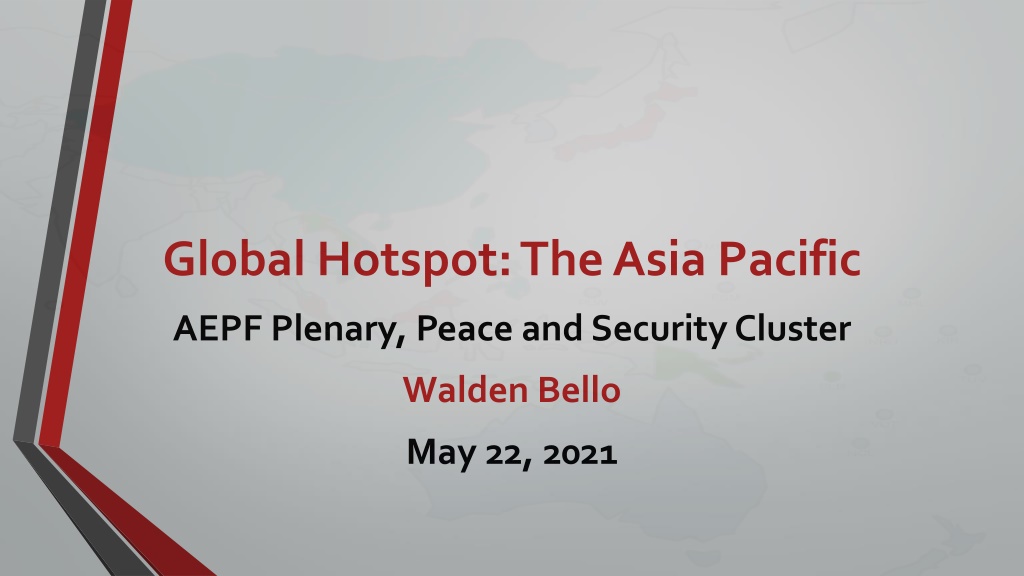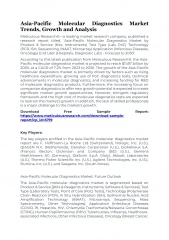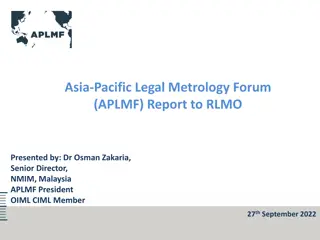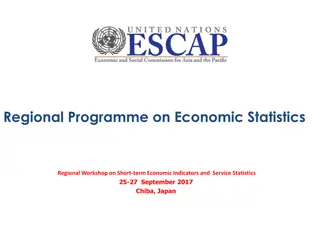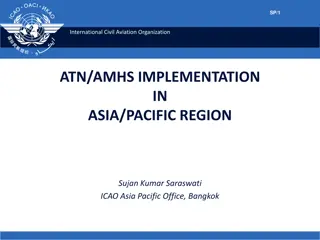Financial Burden of Tuberculosis in Asia-Pacific
The financial burden of tuberculosis on patients in the Asia Pacific region is explored in this analysis. It delves into the economic impact of the disease in global hotspots, shedding light on the challenges faced by individuals affected by tuberculosis. The content also discusses the historical context of conflicts in the Asia Pacific, raising questions about the potential for future confrontations in the region. Additionally, it touches on the geopolitical tensions between the US and China, as examined through the lens of strategic studies and policy perspectives.
Download Presentation

Please find below an Image/Link to download the presentation.
The content on the website is provided AS IS for your information and personal use only. It may not be sold, licensed, or shared on other websites without obtaining consent from the author.If you encounter any issues during the download, it is possible that the publisher has removed the file from their server.
You are allowed to download the files provided on this website for personal or commercial use, subject to the condition that they are used lawfully. All files are the property of their respective owners.
The content on the website is provided AS IS for your information and personal use only. It may not be sold, licensed, or shared on other websites without obtaining consent from the author.
E N D
Presentation Transcript
ropicalMed | Free Full-Text | The Financial Burden of Tuberculosis for Patients in Global Hotspot: The Asia Pacific AEPF Plenary, Peace and Security Cluster Walden Bello May 22, 2021
Hot Wars in the Cold War During the long Cold War Period (1948 1991), one of the big ironies was that the superpowers prepared for war in Europe but it was in the Asia Pacific that the hot wars actually broke out, with two major conflicts, first, the Korean War, where the combined forces of the DPRK and the PRC fought the United States to a stalemate in 1950-53[ second, the long War of National Liberation in Vietnam (1945 to 1973), where the Vietnamese defeated first the French, then the Americans. The big question on the minds of many today is: Will the Asia-Pacific be the site of another major confrontation in what is now being called the New Cold War.
estined for War | Book | Scribe Publications Destined for War? There is a book, published four years ago, by the so-called Dean of Strategic Studies in the United States, Graham Allison, titled Destined for War: Can America and China Escape Thucydides sTrap. The aim of the book, published in 2017, is supposedly how to prevent the US and China from going to war with each other. But if you read the book closely, you will realize that the subtext is actually how the US should go about containing China by political and military means.
Allison was writing about US strategic policy in the pre-Trump period, and here he wrote, American policy essentially seeks to cling to the status quo: the Pax Americana established after World War II [B]ut that status quo cannot be sustained when the underlying balance of power has tilted so dramatically in China s favor. American policymakers, he says, should stop fooling themselves. They have to work out a geopolitical strategy that reflects the fact that China s emergence as the number-one power in Asia and its aspiration to be number one in the world reflects not just the imperative of economic growth but also a supremacist world view bound up with Chinese identity.
I dont know whether Trump read Allison or had someone read him Allison, but he took his advice and, with the help of his China-hating economic adviser Peter Navarro, reoriented American policy towards an aggressive posture towards Beijing on the geo-economic front. Now most indications are that the Biden team are not going to return to the Clinton-Bush II- Obama policy of accommodating China but to extend Trump s policy to the geopolitical front and no one is more happy than Washington s national security estabishment, of whom Allison is a key representative, who have long criticized how the interests of the US s transnational corporations have been the driving force of US policy towards China since the Clinton period.
China as the Center of Global Capital Accumulation Now whatever may be their strategic motives, Allison and his school are right about one thing. China is on its way to becoming No 1 when it comes to the global economy. China may still be No 2, but it is even now the center of global capital accumulation. At the beginning of the third decade of the 21stcentury, China was not only the world s second biggest economy. It had become the center of global capital accumulation or, in the popular image, the locomotive of the world economy, accounting for 28% of all growth worldwide in the five years from 2013 to 2018, more than twice the share of the United States, according to the International Monetary Fund.
Devils Bargain I will not go into the reasons why China has risen so rapidly from being an outcaste of the world economy to being near its very top in just 30 years. All I can say here are two things: 1) Despite its undoubtedly high cost, the Chinese leadership since the 1990 s entered into what we might term, a Devil s Bargain with American TNC s: in return for the super-exploitation of its labor force, it sought to gain foreign investment, foreign markets, and technology transfers to comprehensively develop China s economy.
China Industrializes, US Deindustrializes The second point is that, as the Chinese had expected and demanded, US TNC s in search of superprofitsfrom exploiting a labor force whose average wages were 2.9 per cent of US manufacturing wages transferred a massive portion of US industrial processes and significant industrial technologies to China. China s rapid industrialization was accompanied by rapid US deindustrialization.
Long before the banking collapse of 2008, key U.S. industries as machine tools, consumer electronics, auto parts, appliances, furniture, telecommunications equipment, and many others that had once dominated the global marketplace suffered their own economic collapse. While not all moved to China, moving to China was a central factor in deindustrialization. The China Shock is estimated, conservatively, to have led to the loss of 2.4 million American jobs. Most likely, the number of jobs lost was much higher.
Deindustrialization+Neoliberalism +Financialization = Social Crisis Rise of inequality in the US, to which deindustrialization was a central contributor owing to loss of well paid manufacturing jobs. But this was not the only reason and one must see rise in inequality as a product of neoliberal policies as a whole. Piketty: [I] want to stress that the word collapse [in the case of the US] is no exaggeration. The bottom 50 per cent of the income distribution claimed around 20 per cent of national income from 1950 to 1980; but that share has been divided almost in half, falling to just 12 per cent in 2010-2015. The top centile s share has moved in the opposite direction, from barely 11 per cent to more than 20 per cent.
BI says 100 arrested for Capitol Hill riots, agencies monitoring 'con And Political and Ideological Crisis Political crisis: undeclared civil war has severely damaged US political system as majority population embraces white supremacy. Ideological crisis: loss of American Dream; no longer interested in providing ideological leadership; turning inward, though Left and Right differ on how US can be fixed.
pinion: Xi Jinping Todays chairman, tomorrows dictator? | Opinion | DW | 2 While in China Unlike in US, China, though it had tensions associated with breakneck industrialization, was not suffering from political polarization. Partisans of western-style democracy were a very small minority, though spontaneous feelings of alienation against the authorities were expressed widely on the internet. XI s Ideological renovation: anti-corruption campaign, Chinese dream of shared prosperity, and national rejuvenation. Push for global leadership of globalization, promotion of connectivity, the Belt and Road Initiative.
Danger Ahead With the US suffering from a prolonged economic crisis owing to deindustrialization and financialization and from an undeclared social and political civil war that is bringing everything into gridlock, the only area where the US enjoys undisputed superiority over China is on the strategic front. I would strongly contend that the conjunction of the loss of global economic hegemony, debilitating political and ideological crises, and and massive military superiority is a very dangerous one. The danger comes from not from the fact that China is modernizing its military, as the US Defense Department claims, but that China is so far behind militarily. Let me explain.
Xis Mistake In his speech at the 19thNationalCongress of the Communist Party of China on Oct, 18, 2017 the famous Chinese Dream speech Xi Jin Ping laid out athree-stage schedule for China s military modernization, ending at mid-century with the achievement of the military into world class forces that could manage crises and deter and win wars. One can read that assertion as Xi s admission that the People s Liberation Army was some 30 years behind the US military, the universally regarded as the world class standard. In my view, it was a mistake to admit this and I shall explain why after we have compared the military capabilities of the US and China.
The Strategic Balance How do the United States and China s armed forces compare today? In 2019, US military expenditures were about three times more than China s, $732 billion to $261 billion. The rise in military spending by the US was 5.3 per cent from its level in 2018, while that of China was 5.1 per cent.
ChinaA Near Peer? US officials now routinely describe China as a Near Peer Competitor. This is grossly inaccurate, if we use non-partisan indicators. First of all, in terms of nuclear weapons, Beijing has a relatively small nuclear force that is guided by a No First Use (NFU) Doctrine focused on deterring a potential aggressor via the maintenance of a second strike retaliatory capability. The US has vastly superior nuclear capabilities and it has not adopted an NFU position. China has only about 260 nuclear warheads while at the end of 2017, the US nuclear arsenal contained approximately just under 1400 deployed and approximately 4000 stockpiled warheads.
erald R. Ford Presidential Library and Museum Second, China s conventional offensive capabilities are grossly inferior to that of the US. Two key indicators of a country s offensive capability are its overseas bases and its aircraft carriers. China has only one overseas military base, and that is located in Djibouti off the Gulf of Aden, from which it participates in anti-piracy activities. The US has scores of military bases surrounding China, 25 major bases and 60 other facilities spread all over Japan; 15 bases in South Korea; three bases in Guam; and five bases in the Philippines. In terms of aircraft carriers, China has two operational carriers with an antiquated Soviet-era design, while the US has 11 carrier task forces, one of them, the Seventh Fleet, based in Yokosuka, Japan, which can easily be supplemented by another carrier task force from the Eastern Pacific in the event of conflict. US carriers like the recently commissioned USS Gerald Ford are the state of the art, far in advance of anything China has to offer.
Contrasting Strategic Postures Even the Pentagon does not dispute Beijing s strategic posture as strategic defense which is rooted in a commitment not to initiate armed conflict, but to respond robustly if an adversary challenges China s national unity, territorial sovereignty or interests.
The US strategic posture, on the other hand, is offensive. It has three key components: One is forward deployment, that is to push the presence of US military power as far as possible from the territorial limits of the US and as near as possible to the borders of a likely enemy. Second is a war fighting strategy called Airsea Doctrine. A key document explicitly points to China as the enemy, and it calls for kinetic and non- kinetic (other words, both explosive and electronic) strikes against inland command centers, radar systems and intelligence gathering facilities, raids against missile production and storage operations, and blinding operations against Chinese satellites. It also says that China s seaborne trade flows would be cut off, with an eye toward exerting major stress on the Chinese economy and, eventually, internal stress.
Third the USs long-term strategic perspective is Overmatch. According to noted defense analyst Mike Klare, Although reminiscent of containment in some respects, overmatch differs from Cold War strategy not only because it presumes two (and possibly more) major competitors instead of just one, but also because it requires a perpetual struggle for dominance in every realm, including in trade, energy and technology
uangzhou City Profile: Industry, Economics, and Policy China s Strategic Dilemma China s strategic dilemma is that large parts of the US military forces in the Western Pacific lie right on its doorstep, entrenched in bases on the so- called First Island Chain or at sea in the forward deployed US Seventh Fleet. Most of China s industrial infrastructure and population are located in the country s southeastern and eastern coasts and thus are very vulnerable to US power in the event of conflict.
Chinas response to this dilemma has been to push its defenses outwards, placing anti-access, anti-denial weapons (A2AD) in maritime formations like Mischief Reef that it seized in the South China Sea from countries like the Philippines. These moves have been justified unilaterally by saying that 90 per cent of the South China Sea belong to China. China s claim to 90 per cent of the South China Sea is illegal and violates the rights of five other countries that border that body of water. The US has long seen the South China Sea as part of the American Lake, and its surface ships and submarines patrol the area with impunity up to just outside China s 12 mile territorial waters while its intelligence-gathering aircraft also lurk as close to China as possible surveying every square meter of ocean and coast. While China advances territorial claims, the US advances the doctrine of freedom of navigation to advance its interests.
Chicken Be that as it may, US-China jockeying for power in the South China Sea is creating a very explosive situation, since there are no rules of the game except an informal balance of power, and resorting to balance of power as a regulator of conflict is quite unreliable, as was seen in the case of the European balance of power that resulted in the First World War. Right now, US and Chinese ships are engaged in provocative games of chicken in which jet fighters buzz enemy ships or warships head for their rivals then swerve at the last minute. When I visited Vietnam as a member of Congress in 2014, Vietnamese officials expressed to how a mere chip collision could escalate into a bigger conflict, and I have no doubt they are right since both China and the US are viewing their maneuvers in the West Philippine Sea within a larger regional and global chessboard.
Be that as it may, US-China jockeying for power in the South China Sea is creating a very explosive situation, since there are no rules of the game except an informal balance of power, and resorting to balance of power as a regulator of conflict is quite unreliable, as was seen in the case of the European balance of power that resulted in the First World War. Right now, US and Chinese ships are engaged in provocative games of chicken in which jet fighters buzz enemy ships or warships head for their rivals then swerve at the last minute.
Defusing Conflict in the South China Sea/West Philippine Sea The West Philippine Sea/South China Sea could be the match for a much bigger confrontation. In my writings, I have put forward a four-step plan under the auspices of ASEAN towards a de-escalation of conflict in the area, the main steps of which are: -an agreement among all parties to adopt a code of conduct of their civilian and military contingents in the area; -an agreement to demilitarize and denuclearize the area, a key element of which would be closing down US bases in the Philippines and China withdrawing its forces and military equipment from maritime formations it has seized from the Philippines and other ASEAN countries. -an agreement for joint development of the common space of the South China Sea based on respect for countries Exclusive Economic Zones and continental shelves.
The South China Sea/West Philippine Sea situation is extremely important to address because it is the best candidate to serve as the place where events might ignite a bigger conflict that has to do with the broader historic hegemonic transition that is taking place. Let me explain.
War, Passion, and Reason Clausewitz famously wrote that war is the extension of politics by other means. This gives too much weight to rational calculus as the process of determining when to go to war. It grossly underestimates the role of passion. But what is truly dangerous is when passion is joined to rational calculus, such as when the desire to maintain hegemony is attached to a calculable process of when to go to war. Xi JinPing s estimate at the 19thCongress that it will be in mid-century that China will have world-class forces that can match those of the United States has perhaps unwittingly given the Pentagon a sense that it has at most a 30-year window of opportunity and most likely less to do something. That is what I meant about Xi s making a mistake in his 19th Party Congress speech. Will the Pentagon really allow Beijing to achieve strategic equality, which may well be the last step to America s loss of global hegemony?
merican Troops in Iraq: Time to Leave | National Review Am I exaggerating? The US has probably been the most warlike country over the last 245 years, constantly expanding and taking over territory through military adventures in its first 150 years, then using military force to achieve and maintain military hegemony for the next 100 years. There have been few periods where this country has not been at war. This country has been continuously at war over the last 20 years. Compare this to China, which last deployed troops outside its borders 40 years ago. Indeed, the big fear of the Chinese is that their forces do not have the experience of warmaking that the US has and which would decisive in any conflict.
Let me end by circling back to Graham Allison, the dean of the security studies establishment who says that China and the US are on a collision course for war. To many, a preemptive move on the part of the United States, given its bellicose history, is a given. The question is not whether but when, where, and how it will take place.
onthly Review | Leo Panitch's last Socialist Register: Beyond Digital Capit The End This presentation is based on the author s piece titled At the Summit of Global Capitalism: Accommodation, rivalry or confrontation between the US and China?, that will appear in Socialist Register 2022.
